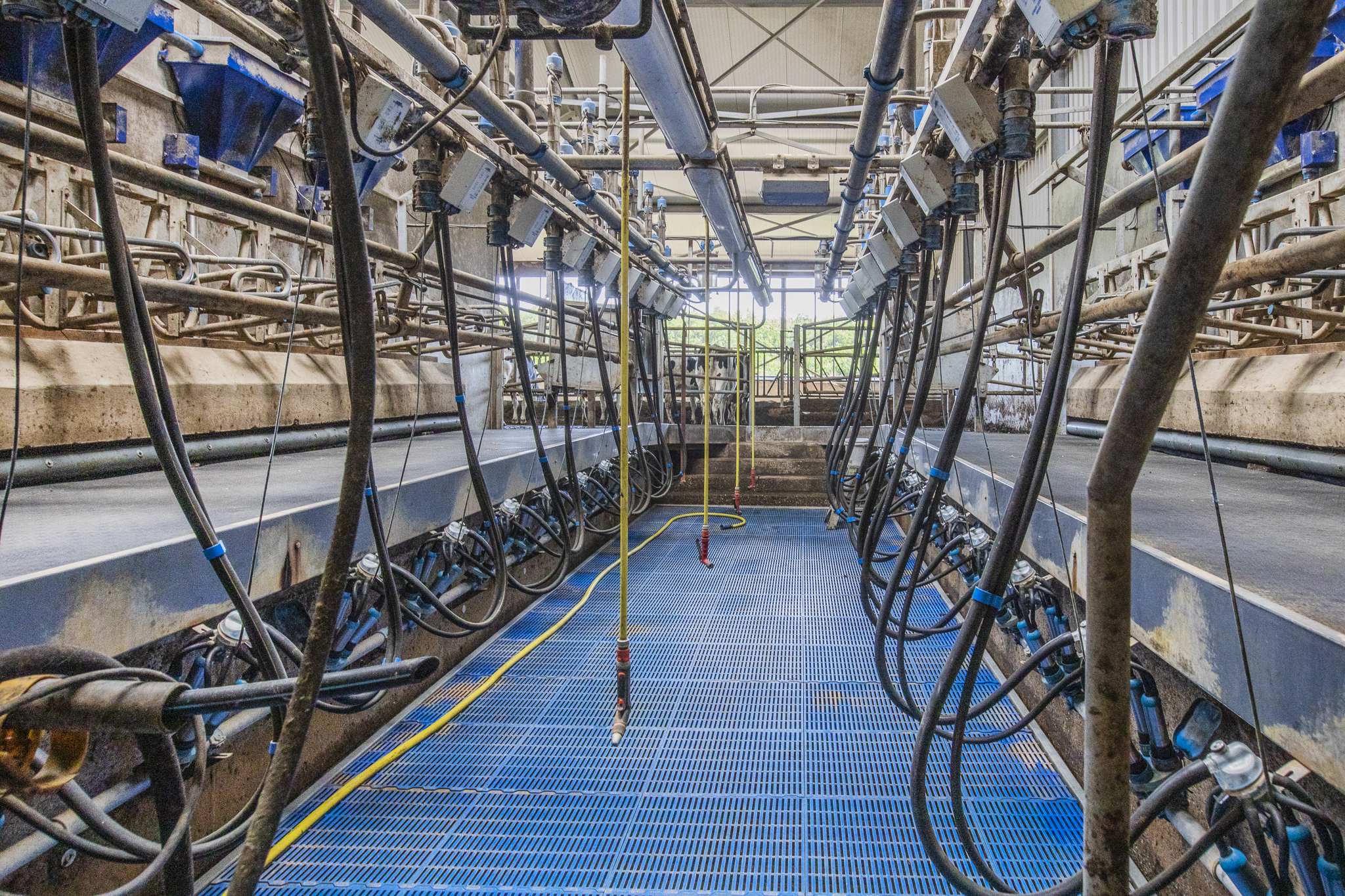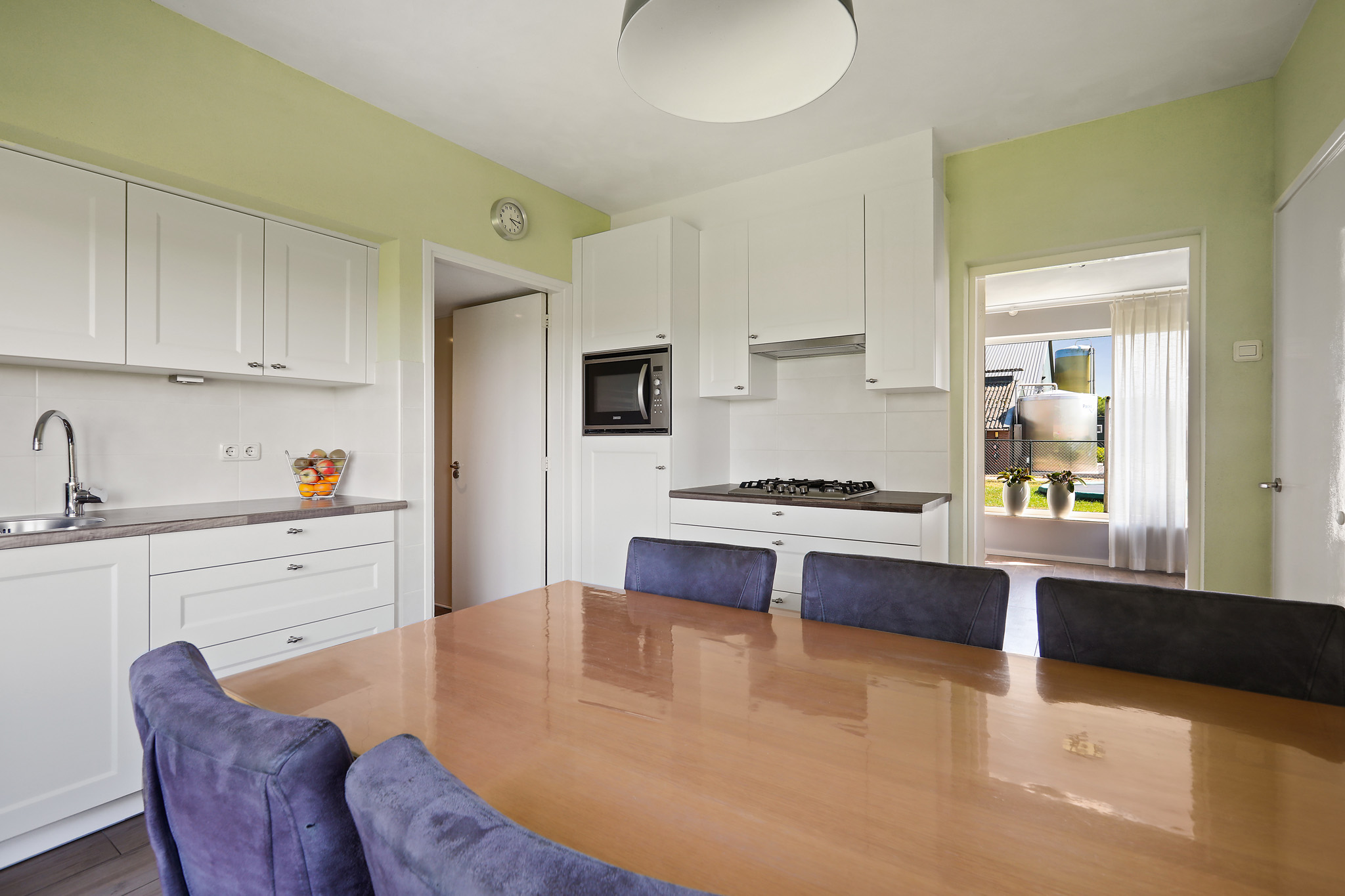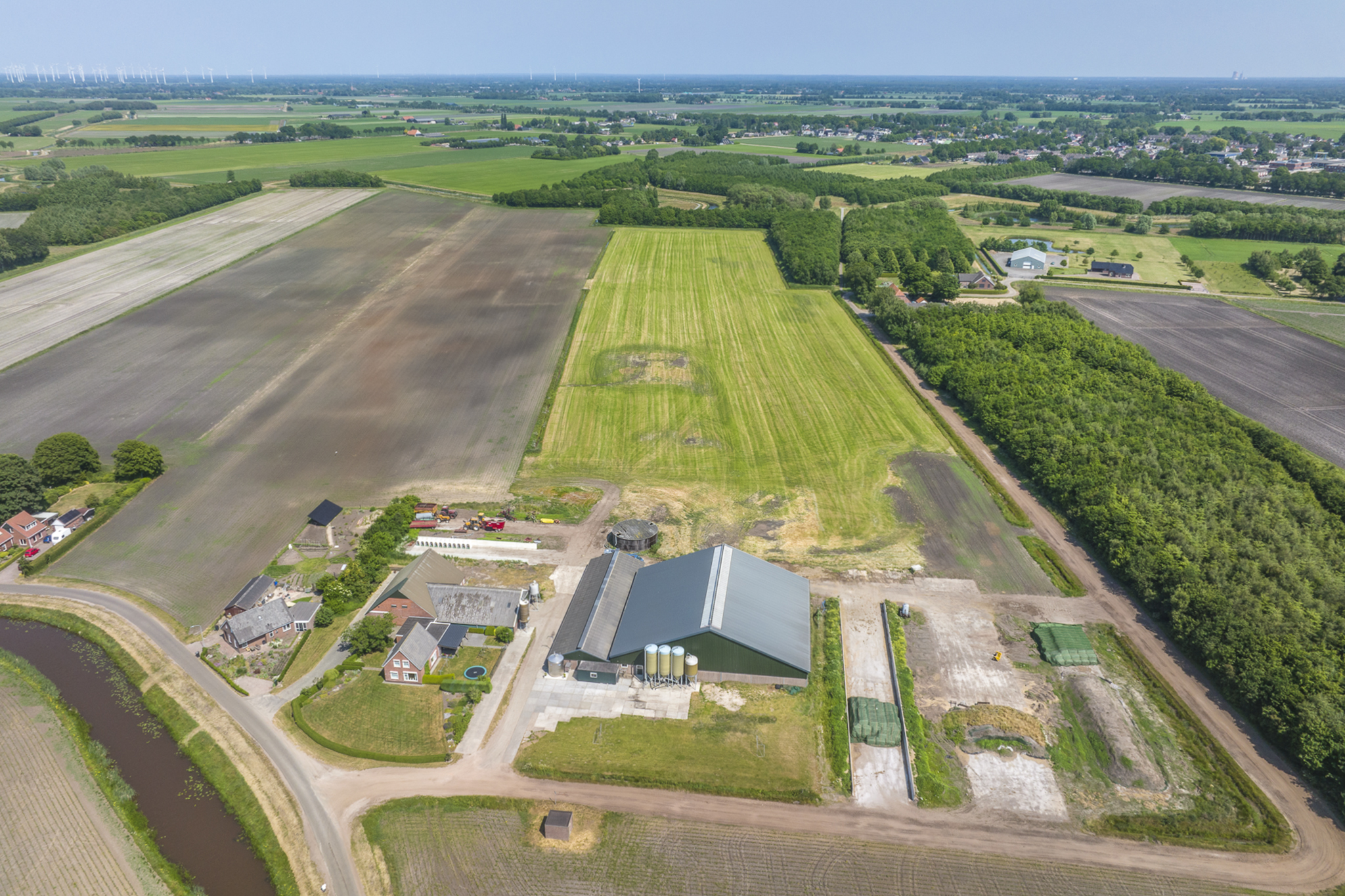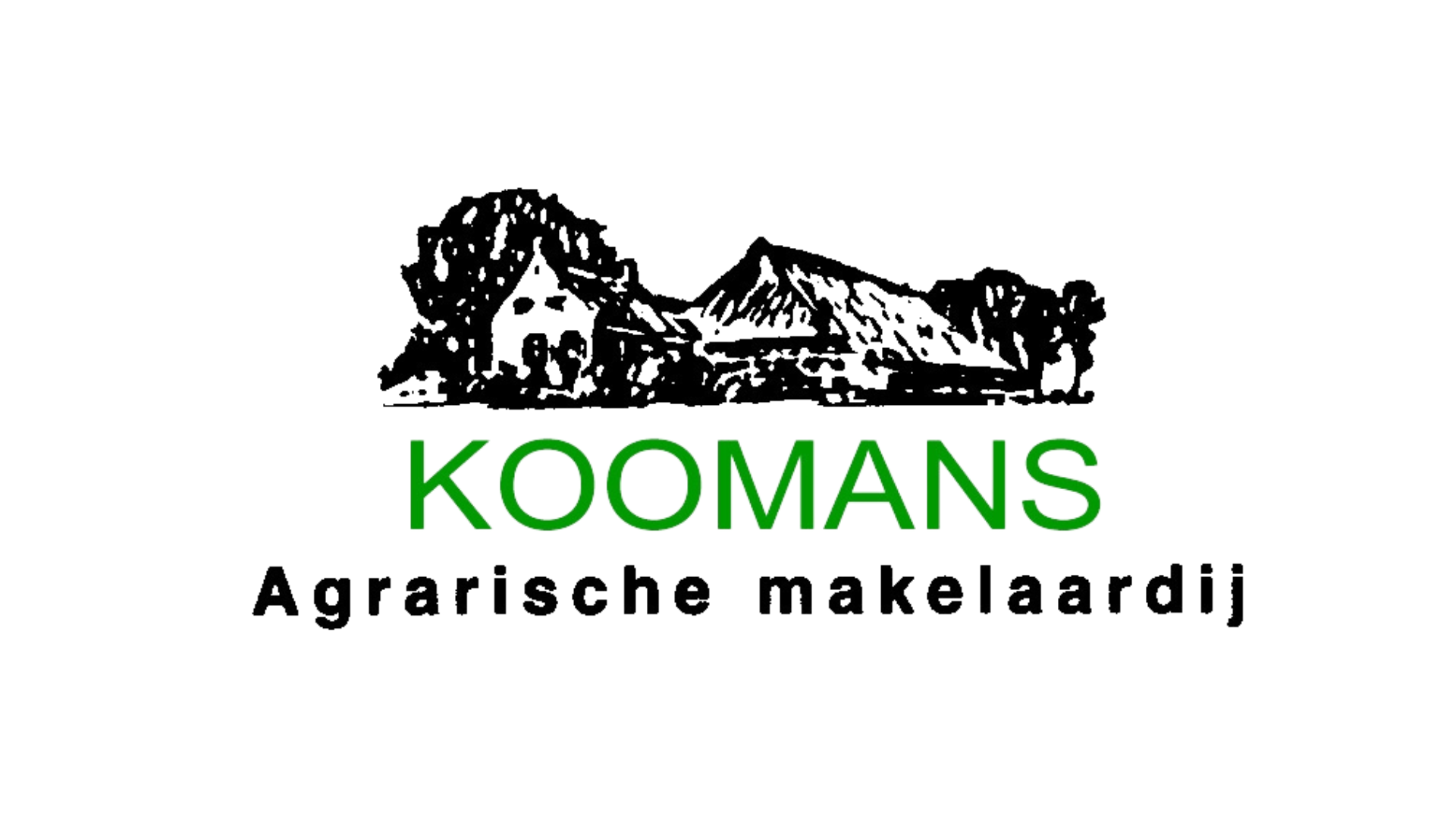Dairy farm with two company residences Emmer-Compascuum.
Drenthe, Netherlands
Characteristics
Characteristics
Description
The company has a 2x10 side-by-side Dairy Master milking parlor, an attached barn, manure silo, multiple roughage storage areas, and further appurtenances, as well as approximately 36.40.65 hectares of high-quality agricultural land, of which approximately 19.63.05 hectares are located in the home plot.
The company is located about 12.8 kilometers north of the nearest Natura2000 area Bargerveen and is therefore not defined by the government as a peak load.
BUSINESS PREMISES
The 1ST BUSINESS RESIDENCE is detached and recently expanded and modernized. The house is built with cavity brick walls and the ground floor has a concrete floor with underfloor heating. The window frames are mostly made of plastic and equipped with shutters. The house has a total of 5 bedrooms and 2 bathrooms.
The 2ND BUSINESS RESIDENCE was built in 2003 in the attached barn and has its own house address. The house has a concrete floor with underfloor heating and its own central heating boiler. The facades have been completely rebuilt with cavity brick walls and the window frames are made of plastic. The house is fully insulated and has a total of 2 bedrooms and a bathroom.
The ATTACHED BARN with space for approximately 30 dry cows is covered with asbestos-containing corrugated sheets and has approximately 150 m³ of manure storage under the slatted floor.
The CUBICLE BARN was built in 2012 as an extension of - and thus forming a whole with - the former Dutch cattle barn and consists of a steel structure with an insulated roof and open ridge. The facades are constructed of prefab concrete walls with dam wall gables and windbreak mesh in the side walls. This barn is equipped with 110 large animal boxes in 6 rows with cow mattresses and there are 2 concrete feeding alleys on either side of the barn. The barn has a slatted floor with approximately 1,800 m³ of concrete manure storage underneath. The milking installation consists of a 2x10 side-by-side Dairy Master milking parlor with digital meters. At the front of the barn, there is a milk silo with a capacity of 18,000 liters.
The FORMER DUTCH BARN is constructed of brick walls with dam wall gables. The barn has been converted into a cubicle barn and has 46 large animal boxes in 2 rows with cow mattresses. The roof is insulated and covered with corrugated sheets, has an open ridge, and is supported by a steel structure. The front section with machine room and former tank room has a rough concrete floor and further slatted floors with approximately 200 m³ of manure storage underneath.
FEED STORAGE
There are five roughage storage areas, including 2 trench silos (70 x 10 x 1.5 and 30 x 7.5 x 1.5) and 3 silage plates (70 x 14, 70 x 8, and 30 x 6).
MANURE SILO
Behind the cubicle barn, there is a steel manure silo from 1986 with a capacity of 420 m³.
LAND
The home plot is approximately 19.63.05 hectares and accessible via the company yard and the public road. The plot has a favorable shape. The plot is currently used as temporary grassland and maize. Furthermore, there are 3 field plots belonging to the company, located approximately 115, 750, and 1,700 meters as the crow flies from the company yard. Respectively approximately 06.68.30, 07.08.65, and 03.00.65 hectares. All plots are on average high-quality and arable-worthy agricultural land.
PUBLIC LAW
Destination:
The company yard has the designation 'Agricultural - Land-based 1' and the field plots all have the designation 'Agricultural with values' with the indication 'Small-scale' or 'Large-scale Peat Reclamations'. Furthermore, a part of the (sub)soil has the double designation 'Value - Archaeology 4'.
Permit:
On February 16, 2015, a Nature Conservation Act permit was issued for the expansion of the existing barn to keep a total of 250 dairy cows and 175 young cattle, with a total emission of 3,407.20 kg NH3. The building permit for this expansion is almost complete with the municipality on a few small details.
OTHER MATTERS
Phosphate rights:
Are not included in the asking price. The same applies to the feed stock, livestock, and machinery.
Asking price:
On request.
SUMMARY
- Modern cubicle barn from 2012
- Room for expansion in NB permit, building permit almost complete
- High-quality agricultural land
- Field plots located at a short distance
- Approximately 12.8 kilometers north of the nearest nature area
- Price on request
We strive to contact you within 48 hours.

The Netherlands
With a population of over 17 million and an area of 41,543 km², the Netherlands has a high population density of 504 per km². About 18% of its surface area consists of water, and a significant portion of the land and population is located below sea level. The country is protected from water through a system of dikes and waterworks. Polders have been created through land reclamation. The landscape of the Netherlands is flat almost everywhere. The Dutch landscape mainly consists of cultural landscapes and managed nature reserves. Over the centuries, not only has the natural environment changed, but due to the shrinking and fragmentation of habitats and environmental pollution, both the quality and quantity of nature have deteriorated. Efforts are being made through nature policy and private initiatives to reverse this trend.
Through diversification in agriculture, entrepreneurs must also try to generate income from non-agricultural activities. These include agricultural nature and water management, agro-tourism, and care farms.

























































